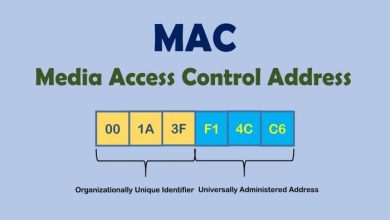Discussing the potential cost savings associated with Azure RDS, including reduced hardware

In today’s rapidly evolving business landscape, organizations are continually seeking innovative ways to enhance efficiency and reduce costs. The adoption of cloud services has become a strategic imperative, with Microsoft Azure emerging as a leading platform for businesses worldwide. This article explores the potential cost savings associated with Microsoft Azure Extern bureaublad-services (RDS), specifically in the context of a Microsoft Dynamics implementation.
Understanding Microsoft Azure Remote Desktop Services:
Microsoft Azure RDS is a cloud-based solution that provides virtual desktops and applications to users. It enables businesses to centralize the management of desktops and streamline application delivery, offering a scalable and cost-effective alternative to traditional on-premises infrastructure.
Reduced Hardware Costs:
One of the primary cost-saving benefits of Azure RDS lies in the reduction of hardware expenses. Traditional infrastructure demands significant investments in physical servers, storage, and networking equipment. Azure RDS eliminates the need for extensive on-premises hardware by leveraging Microsoft’s cloud infrastructure. This shift from capital expenditures (CapEx) to operational expenditures (OpEx) allows organizations to pay only for the resources they consume, leading to substantial upfront savings.
Dynamic Scalability for Microsoft Dynamics Implementation:
Microsoft Dynamics implementation often requires varying levels of computing resources based on business needs and operational demands. Azure RDS provides dynamic scalability, allowing organizations to adjust resources seamlessly as workloads fluctuate. This flexibility ensures that businesses can scale up or down without the need for large capital investments. As a result, Azure RDS provides a pay-as-you-go model, enabling cost optimization through resource optimization.
Efficient Resource Utilization:
Azure RDS optimizes resource utilization by enabling multiple users to share the same virtualized infrastructure. This multi-tenancy model ensures that resources are efficiently utilized, reducing the overall cost per user. Additionally, Azure RDS supports load balancing, ensuring that workloads are distributed evenly across available resources. This efficiency is particularly advantageous in Microsoft Dynamics implementations, where resource-intensive tasks can be handled with optimal performance.
Minimized Administrative Overhead:
Traditional IT environments often involve significant administrative overhead in terms of maintenance, updates, and troubleshooting. Azure RDS shifts these responsibilities to Microsoft’s cloud experts, reducing the burden on internal IT teams. With automated maintenance and updates, organizations can ensure that their Microsoft Dynamics implementation stays current without incurring additional labor costs. This reduction in administrative overhead translates to both time and cost savings for businesses.
Enhanced Security Measures:
Security is a critical concern for organizations, especially when implementing solutions like Microsoft Dynamics. Azure RDS offers advanced security features, including multi-factor authentication, role-based access control, and data encryption. By leveraging Microsoft’s expertise in cloud security, businesses can enhance their overall security posture without the need for substantial investments in dedicated security infrastructure.
Elimination of Downtime Costs:
Downtime can be costly for businesses, impacting productivity and customer satisfaction. Azure RDS minimizes downtime by providing high availability and fault tolerance. In the context of Microsoft Dynamics implementation, this translates to uninterrupted access to critical business applications. The elimination of downtime costs contributes significantly to the overall cost savings achieved through Azure RDS.
Licensing Optimization:
Azure RDS provides a flexible licensing model that further contributes to cost savings. With a variety of licensing options, including pay-as-you-go and reserved instances, organizations can choose the most cost-effective approach based on their usage patterns and business requirements. This flexibility allows for better control over licensing costs associated with Microsoft Dynamics and other software applications, ensuring that organizations only pay for the services they need.
Remote Work Enablement:
The global shift towards remote work has accelerated the need for secure and scalable remote desktop solutions. Azure RDS plays a pivotal role in enabling remote work by providing a centralized and accessible platform for users to access Microsoft Dynamics and other business applications from anywhere in the world. This not only enhances workforce flexibility but also reduces the need for physical office space and associated costs, such as utilities and maintenance.
Data Backup and Disaster Recovery:
Azure RDS includes robust data backup and disaster recovery features, mitigating the risk of data loss and associated recovery costs. Microsoft’s data centers are strategically located globally, providing redundancy and geographic distribution for enhanced data resilience. In the context of Microsoft Dynamics implementation, where data integrity is paramount, these features ensure that organizations can recover quickly from unforeseen events, reducing the financial impact of potential data disruptions.
Eco-Friendly Initiatives:
Beyond direct cost savings, Azure RDS aligns with eco-friendly initiatives by promoting resource efficiency. By consolidating virtual desktops and applications on shared infrastructure, organizations can reduce their overall carbon footprint. Additionally, the energy-efficient design of Microsoft’s data centers contributes to a more sustainable IT ecosystem. For businesses committed to corporate social responsibility, these environmental considerations can be a compelling factor in choosing Azure RDS.
Conclusion:
In conclusion, adopting Microsoft Azure Remote Desktop Services presents a compelling case for organizations seeking cost savings, especially in the context of Implementatie van Microsoft Dynamics. By reducing hardware costs, enabling dynamic scalability, optimizing resource utilization, minimizing administrative overhead, enhancing security measures, and eliminating downtime costs, Azure RDS offers a comprehensive solution that aligns with modern business needs. As organizations continue to prioritize efficiency and financial prudence, Azure RDS stands out as a strategic enabler for cost-effective and scalable IT infrastructure.



